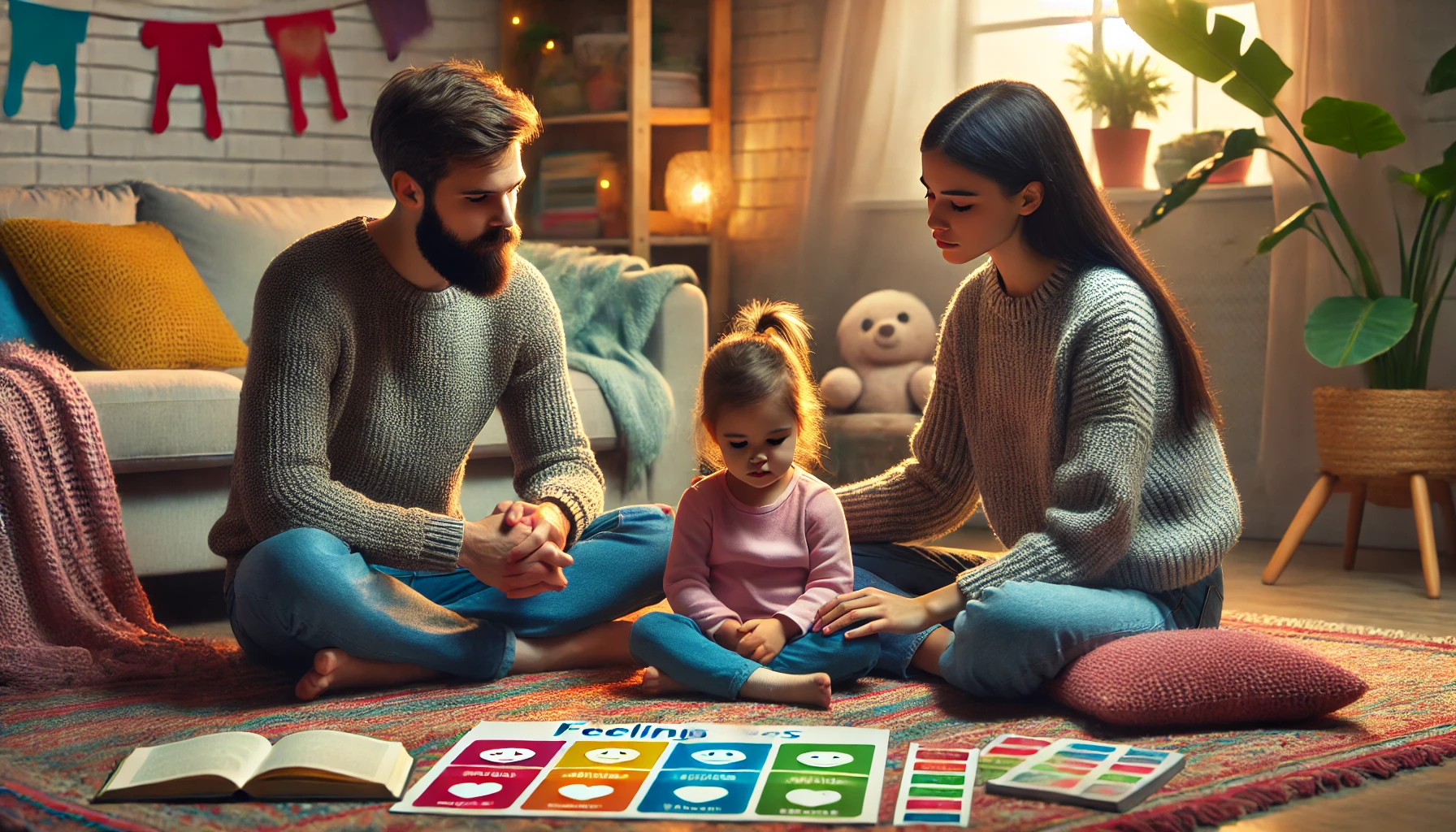Understanding and expressing emotions doesn’t come naturally to young children — it’s a skill they learn with time, guidance, and most importantly, example. Talking about feelings at home helps your child build emotional vocabulary, empathy, and self-regulation. When children can name and express what they feel, they’re less likely to act out and more likely to connect.
So how can we, as parents or caregivers, teach this in a simple and loving way? Let’s explore!
Why Talking About Feelings Is So Important
- Builds emotional intelligence
- Reduces tantrums and emotional outbursts
- Improves communication and social skills
- Helps children feel seen and understood
- Strengthens parent-child connection
It’s not about solving every emotion, but helping your child navigate them with confidence and compassion.
When to Start Talking About Feelings?
As early as possible. Even toddlers can begin to associate simple words with what they feel.
Start with:
- “You look happy!”
- “Are you feeling sad because the toy broke?”
- “That loud sound surprised you!”
The earlier you name emotions, the more natural it becomes for your child to talk about them.
How to Introduce Feelings in Everyday Life
1. Name the Emotion Out Loud
When your child expresses something — a smile, a frown, a scream — try to name it:
- “You’re feeling excited because we’re going to the park!”
- “That made you angry, didn’t it?”
- “It’s okay to feel disappointed when plans change.”
This helps your child build an emotional vocabulary and feel validated.
2. Use a Feelings Chart
Create or print a chart with faces showing different emotions (happy, sad, scared, frustrated, calm, excited, etc.). Ask:
- “How are you feeling right now?”
- “Can you point to the face that shows how you feel?”
Great for visual learners and daily check-ins.
3. Model Your Own Emotions
Let your child hear you talk about your feelings in healthy ways:
- “I’m feeling a little tired today, so I need a quiet moment.”
- “I was frustrated, but I took a deep breath and now I feel better.”
This shows that emotions are normal and manageable — even for adults.
4. Read Books About Emotions
Stories are a fantastic way to talk about feelings. Some great options:
- The Color Monster by Anna Llenas
- Glad Monster, Sad Monster by Ed Emberley
- Today I Feel… by Madalena Moniz
- When Sophie Gets Angry – Really, Really Angry by Molly Bang
After reading, ask:
- “How did the character feel?”
- “What would you do if that happened?”
5. Play Emotion Games
Turn learning into fun:
- Emotion charades: Act out different feelings
- Emotion matching: Match faces to words
- Feelings dice: Create a cube with emotions and act them out when rolled
6. Validate, Don’t Dismiss
Avoid phrases like:
- “You’re fine.”
- “Don’t cry.”
- “That’s nothing to be upset about.”
Instead, try:
- “I see this really upset you.”
- “It’s okay to feel that way.”
- “I’m here with you.”
Even if you don’t agree with the reason, the feeling is still real for your child.
Help Them Find Healthy Ways to Express
- Draw how they feel
- Give a stuffed animal to hug
- Let them jump, stomp, or squeeze a pillow (in a safe way)
- Encourage words like: “I’m mad because…” or “I feel sad when…”
You’re not stopping the feeling — you’re guiding the expression.
Create a “Calm Down” Space
Set up a cozy spot with:
- Pillows or beanbags
- Calming toys (like a glitter jar or soft sensory items)
- Books about emotions
- A feelings chart or mirror
Let your child visit this space when they need a moment to regulate, not as punishment.
Be Patient — It’s a Process
Children may not always express themselves clearly or calmly. That’s okay. What matters is consistency and connection. Over time, they will begin to recognize, label, and share their feelings more effectively.
Common Challenges & How to Handle Them:
- Child says “I don’t know” when asked how they feel
→ Offer choices: “Do you think you’re feeling mad, sad, or tired?” - Child uses behavior instead of words
→ Stay calm, reflect the feeling: “It seems like you’re angry. Let’s talk when you’re ready.” - Overwhelmed parent moments
→ Pause, breathe, and come back with empathy. You’re human too!
A Foundation for Life
By helping children talk about feelings, you’re not just improving behavior — you’re giving them tools for life. Emotional intelligence supports friendships, learning, mental health, and resilience.
The goal isn’t a child who never gets upset — it’s a child who learns that emotions are part of life, and they have the strength to understand and handle them.
